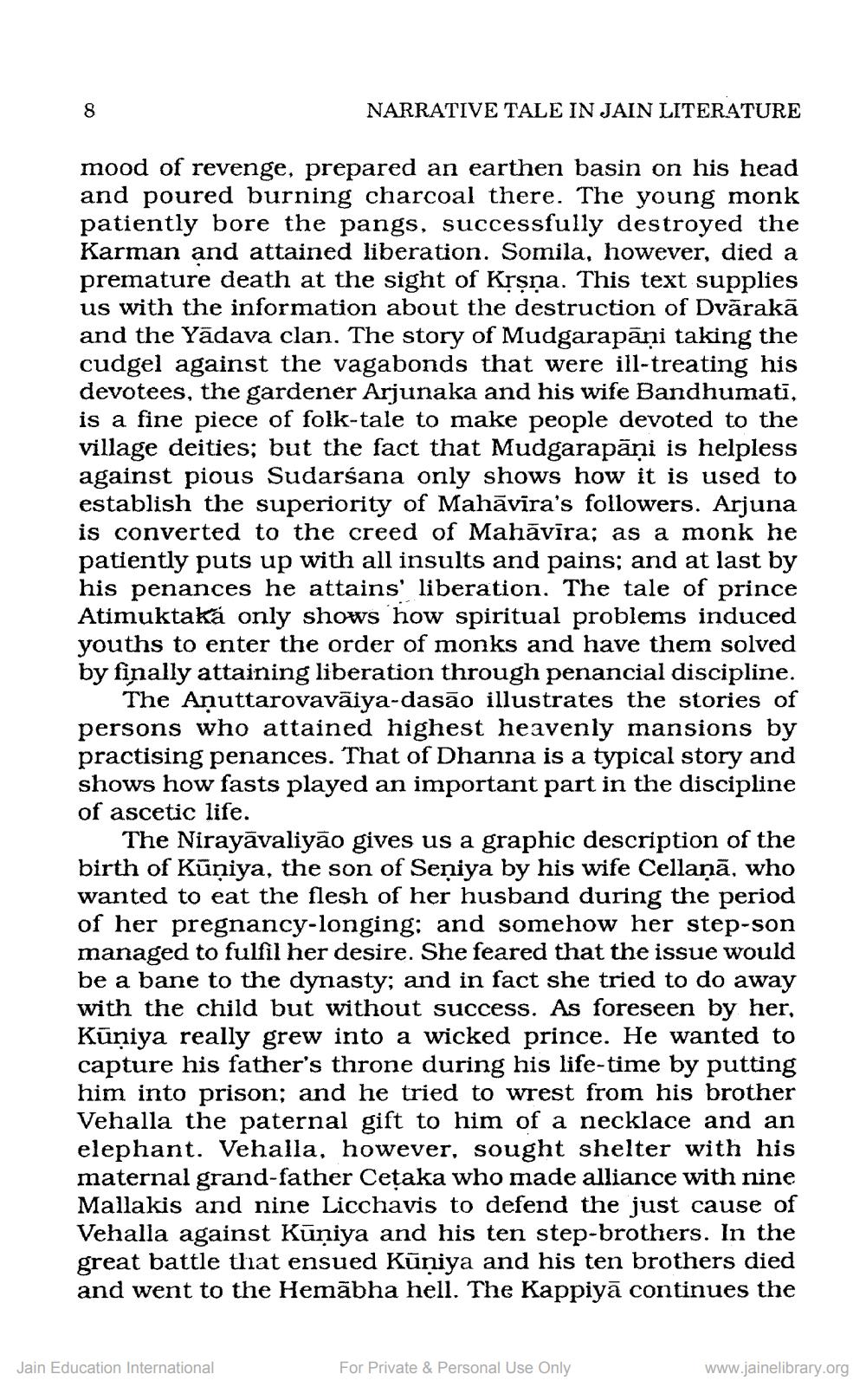________________
NARRATIVE TALE IN JAIN LITERATURE
mood of revenge, prepared an earthen basin on his head and poured burning charcoal there. The young monk patiently bore the pangs, successfully destroyed the Karman and attained liberation. Somila, however, died a premature death at the sight of Krşņa. This text supplies us with the information about the destruction of Dvārakā and the Yādava clan. The story of Mudgarapāni taking the cudgel against the vagabonds that were ill-treating his devotees, the gardener Arjunaka and his wife Bandhumati, is a fine piece of folk-tale to make people devoted to the village deities; but the fact that Mudgarapāņi is helpless against pious Sudarśana only shows how it is used to establish the superiority of Mahāvira's followers. Arjuna is converted to the creed of Mahāvīra; as a monk he patiently puts up with all insults and pains, and at last b his penances he attains' liberation. The tale of prince Atimuktaká only shows how spiritual problems induced youths to enter the order of monks and have them solved by finally attaining liberation through penancial discipline.
The Anuttarovaväiya-dasāo illustrates the stories of persons who attained highest heavenly mansions by practising penances. That of Dhanna is a typical story and shows how fasts played an important part in the discipline of ascetic life.
The Nirayāvaliyāo gives us a graphic description of the birth of Kūņiya, the son of Seniya by his wife Cellaņā, who wanted to eat the flesh of her husband during the period of her pregnancy-longing: and somehow her step-son managed to fulfil her desire. She feared that the issue would be a bane to the dynasty; and in fact she tried to do away with the child but without success. As foreseen by her, Kūniya really grew into a wicked prince. He wanted to capture his father's throne during his life-time by putting him into prison; and he tried to wrest from his brother Vehalla the paternal gift to him of a necklace and an elephant. Vehalla, however, sought shelter with his maternal grand-father Cetaka who made alliance with nine Mallakis and nine Licchavis to defend the just cause of Vehalla against Kūņiya and his ten step-brothers. In the great battle that ensued Kūniya and his ten brothers died and went to the Hemābha hell. The Kappiyā continues the
Jain Education International
For Private & Personal Use Only
www.jainelibrary.org




